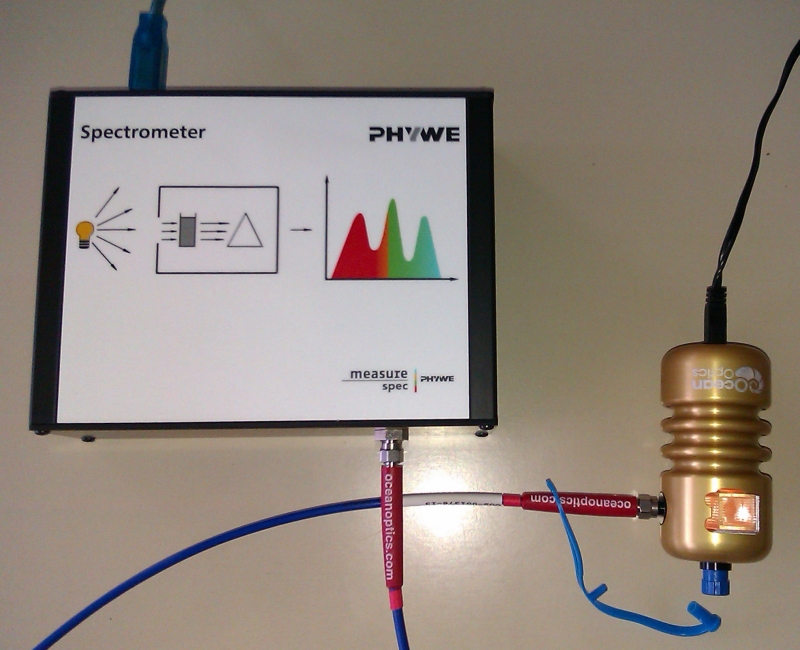Worksheet 4.2: An absorption photometer for instruction in school (6/6)
Measurement of fluorescence
![]() The photometer is able to measure emission spectra of fluorescent substances in it's intensity mode.
In this case, measurements are not done using transmitted light as in photometry; the brightness of the passing light is so
high, that the overlapping but quite weak fluorescence would not be detected. Because fluorescence is emitted in all directions,
it is best measured in a 90° angle to the exciting light beam, which is then no longer irritating.
The photometer is able to measure emission spectra of fluorescent substances in it's intensity mode.
In this case, measurements are not done using transmitted light as in photometry; the brightness of the passing light is so
high, that the overlapping but quite weak fluorescence would not be detected. Because fluorescence is emitted in all directions,
it is best measured in a 90° angle to the exciting light beam, which is then no longer irritating.

Because the brightness is very small in those measurements, a fibre with a higher core diameter to the one in photometry is used (speaking of the diameter of the light conducting fibre bundle). The fibres for photometry res. fluorescence have a core diameter of 50 μm res. 400 μm, which enables to detect light with a 64 times higher efficiency.
![]() Nonetheless, the range of the intensity scale has to be reduced to about 10000 counts to show the weak fluorescences.
The dark current of about 1000 counts distinctly influences the data and should therefore always be measured seperately
and then subtraced from the measured spectra.
Nonetheless, the range of the intensity scale has to be reduced to about 10000 counts to show the weak fluorescences.
The dark current of about 1000 counts distinctly influences the data and should therefore always be measured seperately
and then subtraced from the measured spectra.
